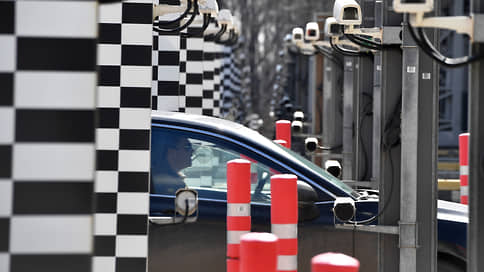Tariffs may rise per kilometer – Newspaper Kommersant No. 183 (7384) dated 10/04/2022
[ad_1]

The Ministry of Transport plans to increase fares on toll roads: the maximum price per 1 km for passenger cars will increase from the current 3 rubles. up to 5–8 rubles. The innovations were planned a year ago, after being finalized, the draft government decree with prices was again published for discussion. The Ministry of Transport indicates that the current tariffs were calculated in the realities of 2015, while the cost of construction is constantly growing. The decision to repeat the public discussion “was taken in connection with significant socio-political events,” the Avtodor state company told Kommersant, without specifying, however, what kind of events they are talking about. Representatives of the transport industry criticized the initiative, pointing out that “under the current conditions, carriers should be supported, and not raise tariffs.”
Ministry of Transport published new edition draft government decree with tariffs for toll federal roads (currently 2016 prices are in effect). On state highways, where the fare was introduced after their reconstruction (for example, M-1 “Belarus”, M-4 “Don”, M-3 “Ukraine”), the maximum fare will be increased from the current 3 rubles. up to 5 rubles for 1 km. If the route is built from scratch (for example, the Central Ring Road or M-12 Moscow-Kazan), the maximum tariff rises from 3 rubles. up to 8 rubles Similar tariff indexation is planned for buses and trucks.
The revision was needed due to the increased cost of construction by an average of 12% (data from the state company Avtodor since the beginning of 2021), follows from the explanatory note.
The M-12 highway, in particular, has already risen in price by 30% – up to 800 billion rubles, and the authorities want to extend it to Vladivostok. New routes from the Urals to the Black Sea are also being designed. Repairs and overhauls, financed, among other things, by collecting fees, have also become more expensive, the Ministry of Transport says. The department reminds that the current marginal tariff was calculated in 2015 prices. On the Central Ring Road and the M-11 sections after Solnechnogorsk, the tariffs are now the maximum possible.
The Ministry of Transport has been trying to increase the cost of using paid sections since October 2021, when the first draft of the relevant government decree was published (Kommersant talked about it). After the remarks of the Ministry of Economy, the document was finalized, reducing tariff indexation from 66-70% to 50%, but only for trucks. Since March 2022, the project has been at a standstill. Last Friday, the Ministry of Transport published the third edition with the same tariffs that were proposed in the spring. The decision to re-publicly discuss the resolution “was made in connection with significant socio-political events,” Kommersant was told at the Avtodor state company, without explaining what kind of events they were talking about.
It is clarified that the document will not affect facilities built under concessions concluded before 2013, that is, toll sections of the M-11 Neva 15-58th km and the northern bypass of Odintsovo.
These roads, we recall, are the most expensive in Russia (per 1 km of track). They are operated by the North-West Concession Company and New Quality Roads JSC, respectively. For example, the passage of a passenger car on Saturday afternoon from the Moscow Ring Road to Solnechnogorsk without a transponder costs 1 thousand rubles, or 23 rubles. for 1 km. “Tariffs on these toll roads are limited by the terms of the agreements concluded,” Avtodor explained to Kommersant. “In accordance with the law, the terms of the agreement, determined during the competitive procedures and approved by the government, cannot be revised unreasonably.” The government decree will also not affect the Western High-Speed Diameter in St. Petersburg, toll sections in the Pskov region, the toll bridge across the Kama and Bui rivers in Udmurtia, and other roads that do not have federal significance.
“The increase in the maximum tariff will allow for flexible tariff regulation while maintaining a balance between the economics of projects and the benefits of toll road users, which will contribute to the outstripping attraction of extrabudgetary financing (bond loans and attracted funds from investors) and, accordingly, accelerate the construction, reconstruction and overhaul of roads” , the explanatory note says. Truck owners will not feel the rise in price, the department believes, citing the following calculation: the average travel distance on toll roads for heavy trucks is 300 km, and at the maximum new tariffs, the trip will rise in price by 804 rubles, which, with the cost of the transported cargo from 1 million rubles. does not exceed 0.08%. It should be noted that similar calculations were made by the Ministry of Transport at the beginning of the year.
Over the past six months, the economic situation in the country has deteriorated significantly, says Vladimir Matyagin, president of the Gruzoavtotrans association: spare parts and fuel have risen in price. In addition, he says, many truck drivers are now being drafted into the armed forces as part of the mobilization, companies are short of employees, they are losing money. “Under these conditions, carriers should, on the contrary, be supported, and not raise tariffs,” he believes. “Perhaps, some benefits or discounts should be introduced. It seems that the Ministry of Transport does not look at the market at all.”
“Users of toll roads will probably be unpleasantly surprised by the increase in tariffs. But such a decision is based on pure economics,” says Alexander Shumsky, head of the Probok.net expert center. “Expenses are growing not only for construction, but also for the purchase of traffic management equipment, various equipment, including foreign production. I think that the Ministry of Transport is including in this project not only the accumulated inflation, but also the future one, so that the tariffs will not be touched for several years later.”
[ad_2]
Source link








